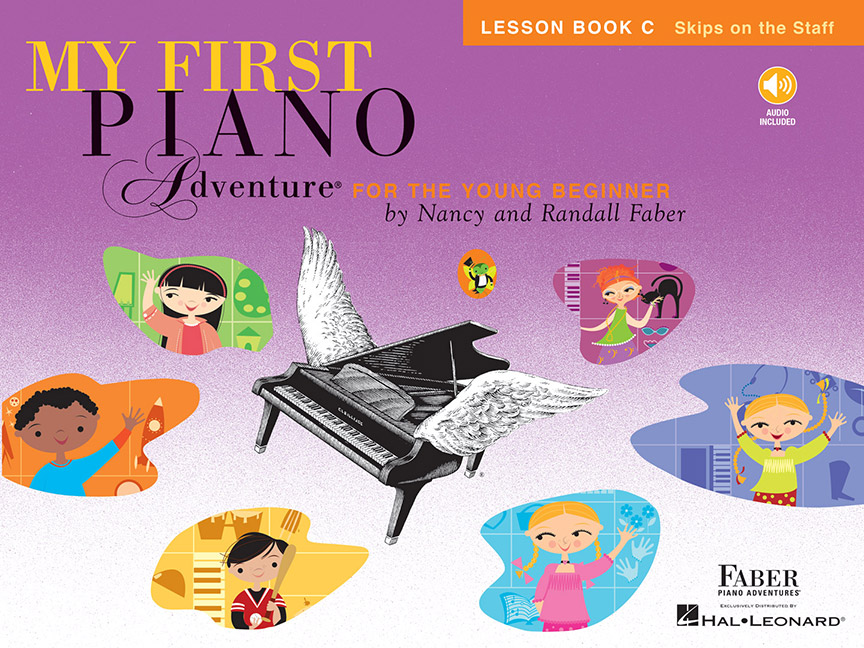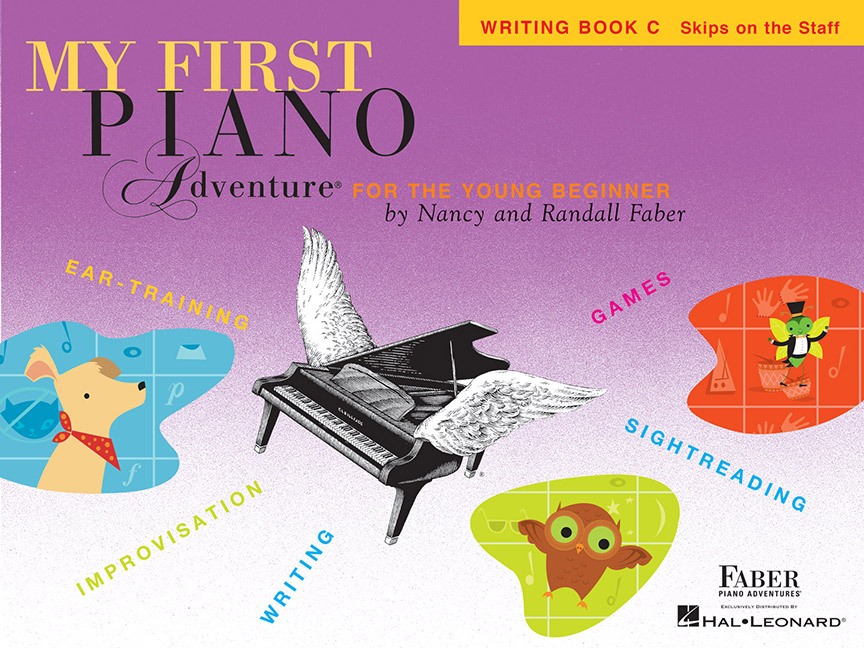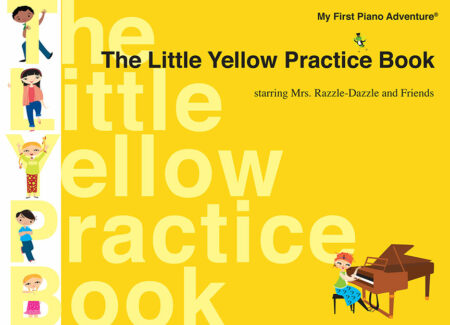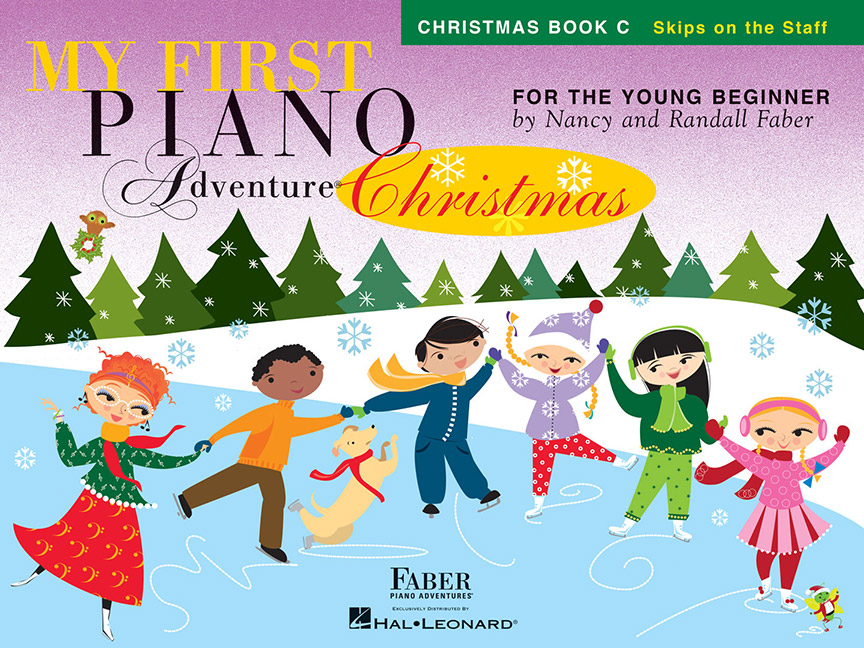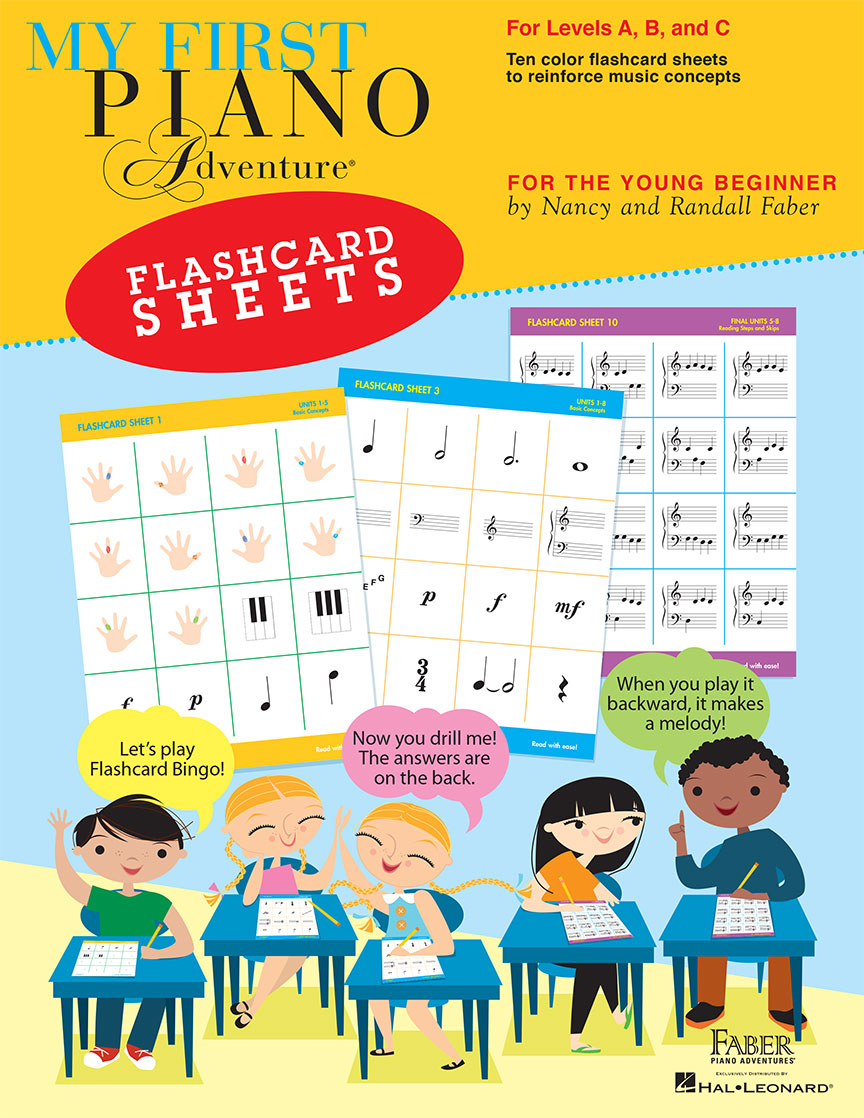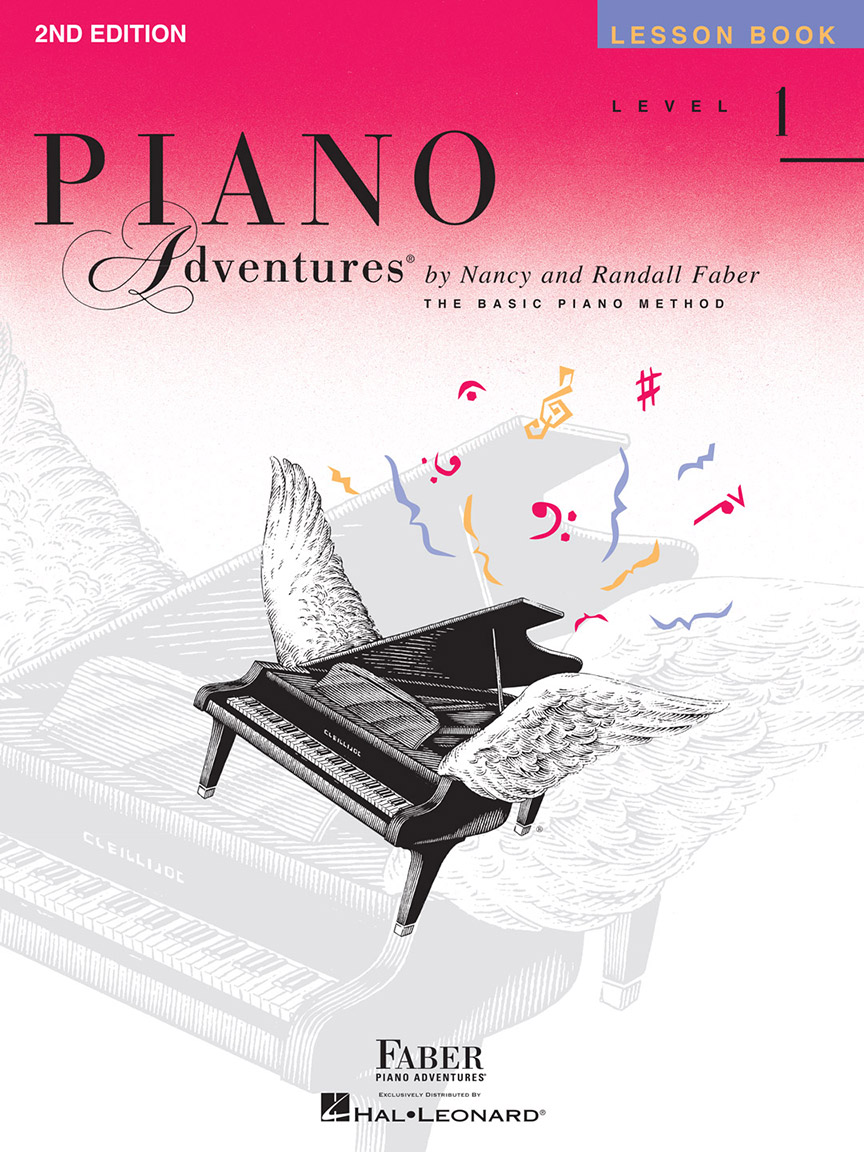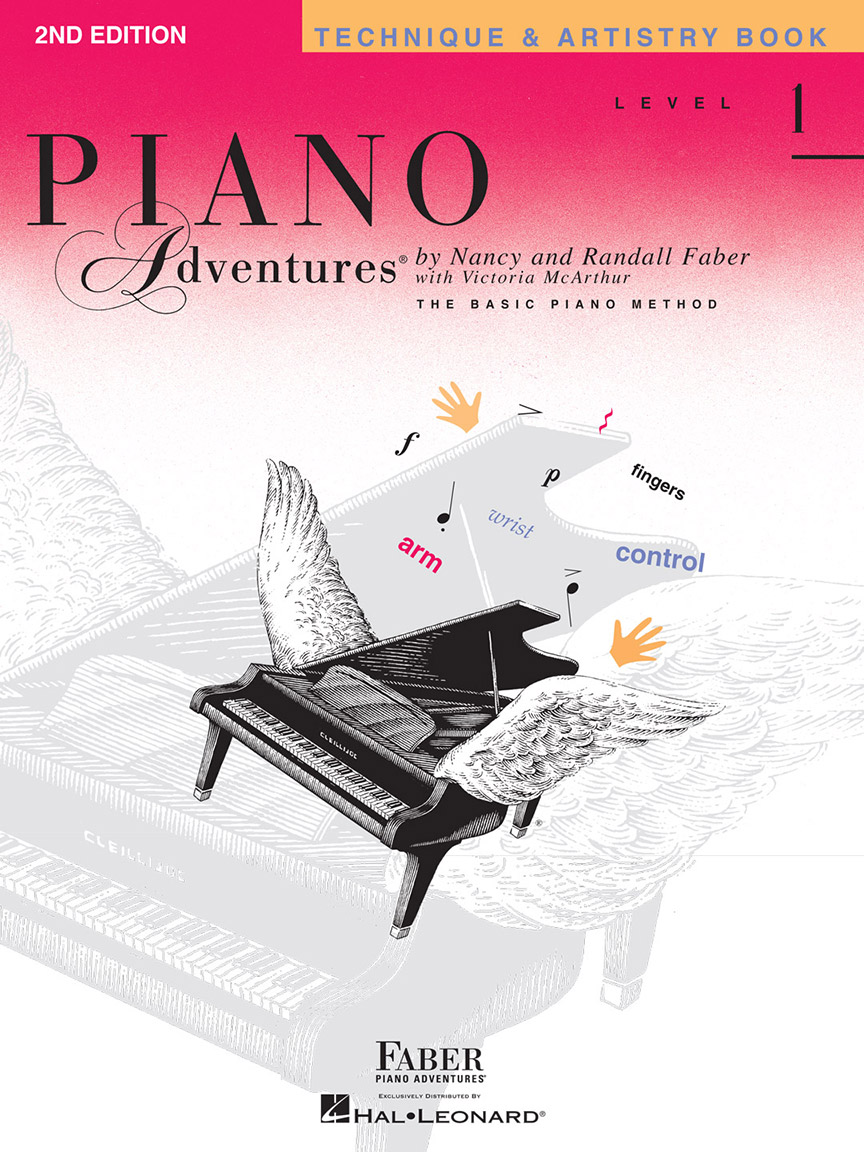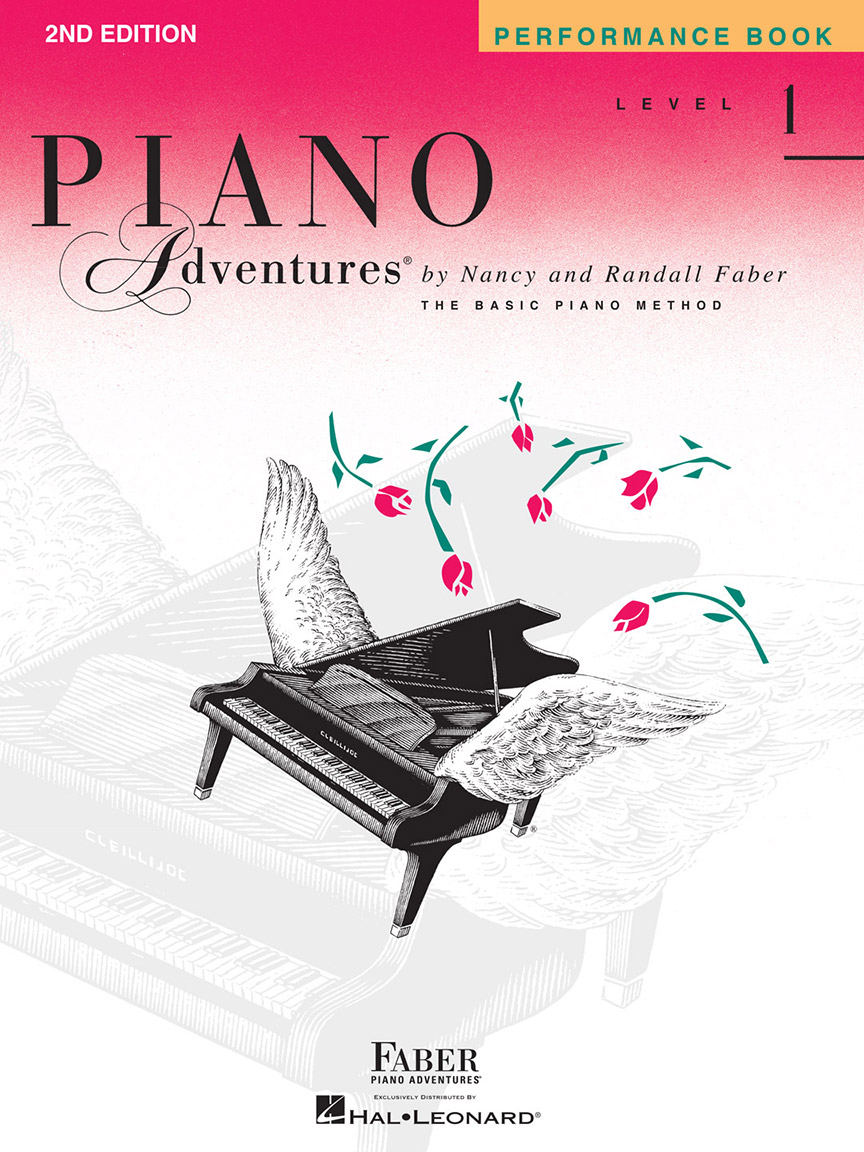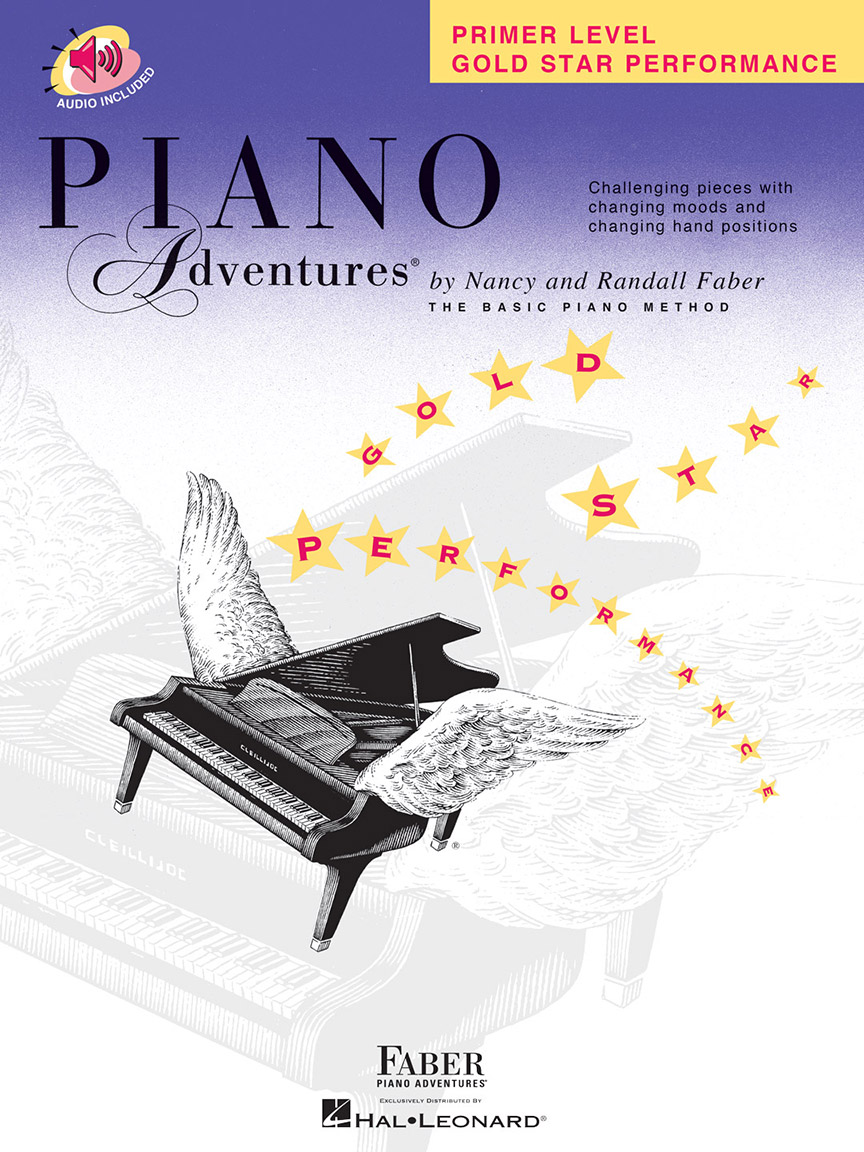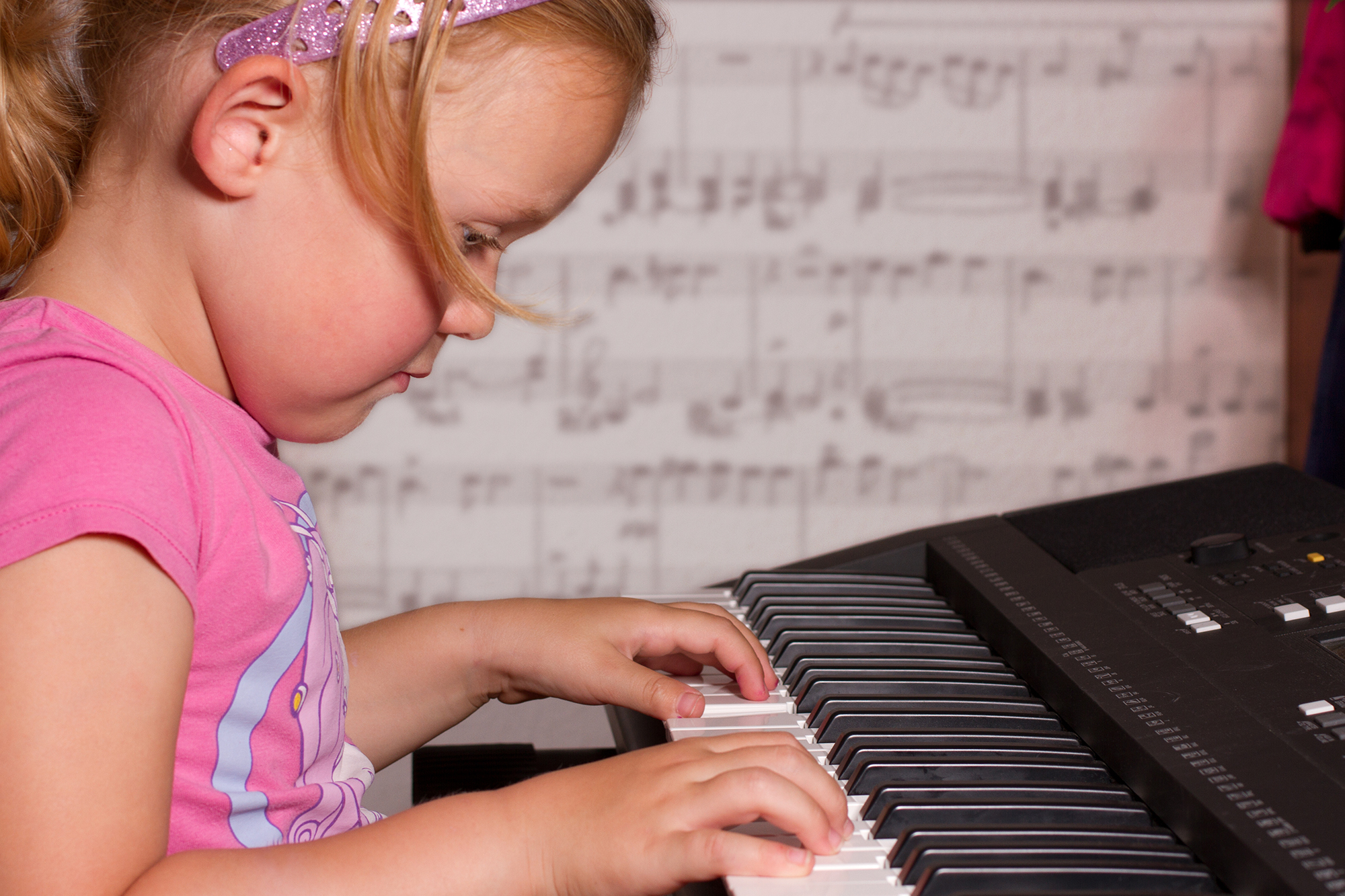
20Questions and Answers for My First Book C
- What is the main goal of Book C? Why is Book C the last in the series?
- What role do the “friends” play in Book C?
- Book C also features a CD /Audio of children singing each song. How important is this to the course?
- What is the note-reading strategy in Book C?
- How are theory and creativity presented in the Writing Book C?
- Is there technique in the C Book?
- Should a parent/caregiver attend the lessons?
- How long should a student in Book C practice each day?
- How many songs should a teacher assign each week?
- Is it possible to teach online lessons with a Book C student?
- Is there a Teacher Manual for Book C?
- What other materials support teaching the C Books?
- Could a Book C student begin a PreTime Piano Book?
- Is there a Christmas Book for the “C Level?”
- How long should it take a student to complete the “C Books”?
- Can the “C Books” be taught in a group setting? Is an assistant needed?
- What if a student is not learning to read the notes well?
- Should a student memorize the assigned pieces?
- Could a student in the “C Books” play in a recital?
- Where does a student go after Book C? What if the student is not ready to begin Basic Piano Adventures Level 1?
The description on the cover of Lesson Book C and Writing Book C says “Skips on the Staff.” This is a quick summary of the main goal of the C Books: to read skips on the Grand Staff. This includes knowing the note names of those skips and playing melodies using skips with accurate rhythm. Reading skips on the staff is balanced with building technique. And why not build technique with melodies of Mozart, Beethoven, Haydn, Brahms, and Tchaikovsky—along with folk tunes and Faber originals.
Enjoy listening to the first song that introduces the composers.
Lesson Book C Audio (Introducing Composers)
Friends at the Piano (pp. 6-7)

By the end of Book C students are prepared to begin the Level 1 Books in the Basic Piano Adventures method.
2. What role do the “friends” play in Book C?
The “friends” are growing up! In the C Books the 5 “friends at the piano” continue their piano adventure by meeting new composers, reading skips on the Grand Staff, and growing in musicianship. The “friends” dine with Mozart, dive for a treasure hunt, and play Technique Games. They also improvise on F-A-C, compose a waltz, and learn the G 5-finger scale, to name just a few activities.
The “friends” introduce new concepts, lead ear-training and sightreading, and appear in the Music Dictionary at the end of the book.

3. Book C also features a CD /Audio of children singing each song. How important is this to the course?
The Audio/CD is an essential component for the Lesson Book C in two ways:
- Singing is a fundamental activity in developing aural awareness. Recordings of children singing the songs encourage Book C students to sing along, too.
- The orchestrations introduce tempo, character, and colorful harmonies that expand the child’s aural world.
Here are a few ways to use the Book C Audio/CD:
- The teacher plays the orchestration for a song at the lesson. To start, just listen. Listening prepares the child to hear patterns first, then see these patterns on the Grand Staff.
- Play the orchestration again. This time the teacher and student point to the notes in rhythm with the music.
Sample a few audio songs.
Lesson Book C Audio
Con Brio (pp. 8-9)

Night of Stars (pp. 46-47)

You Can Clap for Me (pp. 58-59)


4. What is the note-reading strategy in Book C?
To “read with ease” is the goal for the young piano student. The Book C student learns note names and steps and now skips for a quick reading response—visually on the page and physically on the keys.
In Book C a playful mouse whose first name is “E-G-B” instructs students to instantly recognize these three treble line notes. (This is used in place of a sentence, such as, “Every Good Boy Does Fine.”) With R.H. fingers 1-3-5, students play the E-G-B keys, shifting the thumb up to E.
View these colorful, minor E-G-B pieces.
Lesson Book C
Treble Clef Mouse, E-G-B's Morning Warm-ups (pp. 16-17)

Baby Owl (pp. 22-23)

Leap for the Piñata (pp. 30-31)

Detective (you) at the Piano! (pp. 52-53)

Reading expands with space-space skips and different hand placements.
Lesson Book C
Allegro Skips (p. 42)
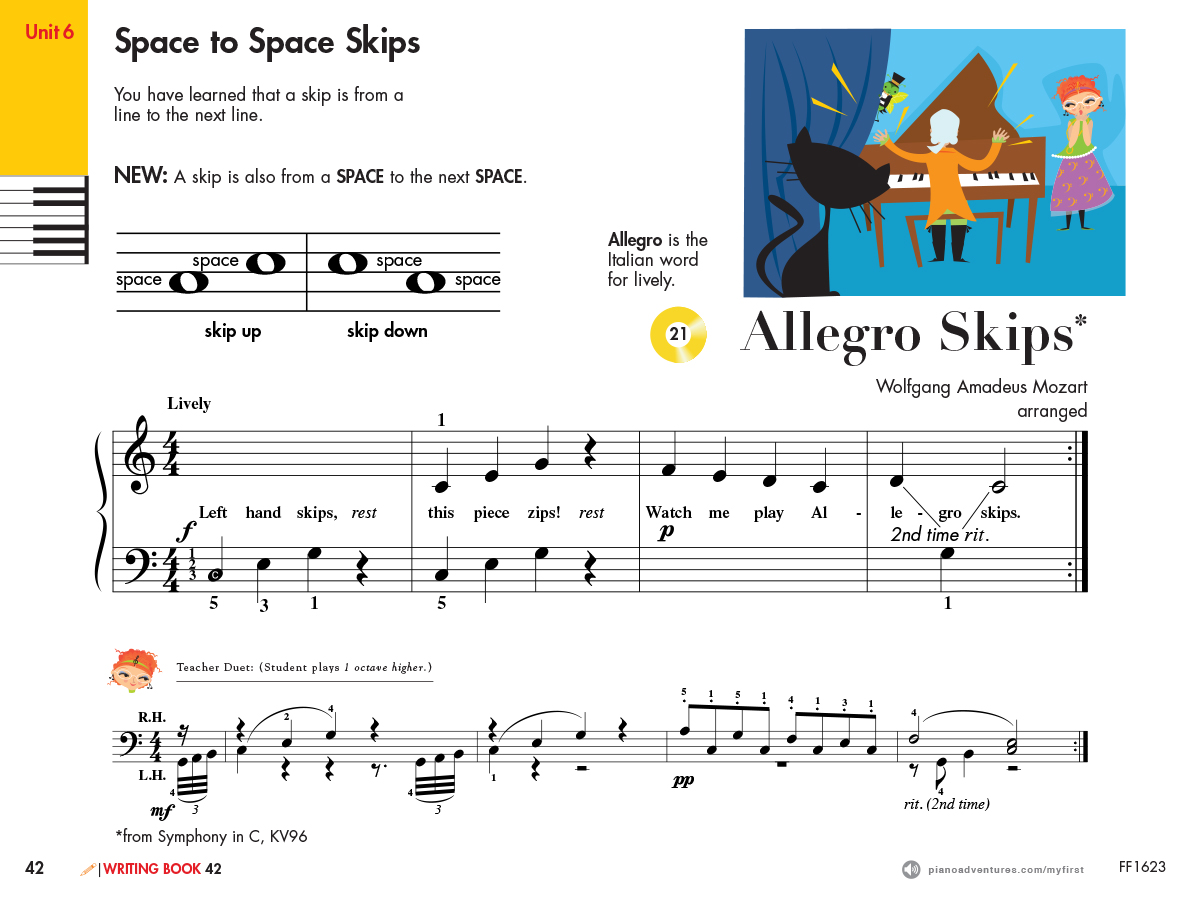
Surprise Symphony Theme (p. 49)
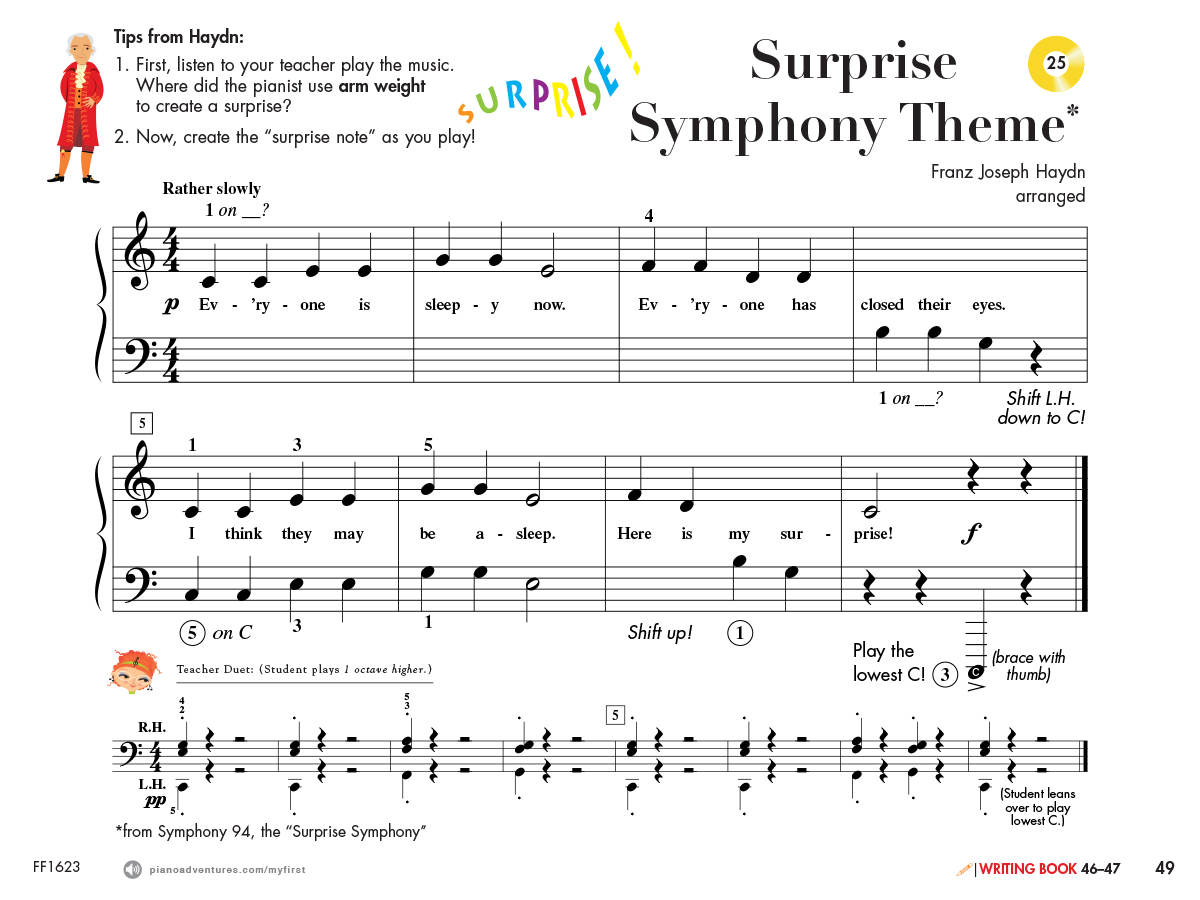
As further orientation to the bass staff, C Book introduces two bass Guide Notes—top line A and bottom-line G The next songs use these bass notes as the opening note to reinforce finding the starting position.
Lesson Book C
Bass Clef Chant (pp. 50-51)

Detective (you) at the Piano! (pp. 52-53)

Mouse in the Clock (pp. 54-55)

Bedtime Boogie Woogie (pp. 56-57)

Quick spotting of steps and skips, treble line notes E-G-B and Bass Guide Notes A, F, and low G gives students a roadmap for reading.
This will be further developed in Level 1 of the Basic Method.
5. How are theory and creativity presented in the Writing Book C?
Writing activities in the C Book involve tapping 4/4 and 3/4 rhythms, recognizing patterns, sightreading, and ear-training. You’ll find writing work also for skips, ABA musical form, and Composer Fun Facts and Game pages. A final written assessment ends the book.
Here are sample pages:
Writing Book C
Time for Rhythms (pp. 4-5)

CLAP for Sightreading (p. 25)

Skip to the Treasure (p. 34)

Swirl and Twirl (pp. 36-37)

Clap for Me, If . . . (pp. 52-53)

Here are a few specific Book C pages for creative activities. They all involve making musical choices, a key ingredient for creativity!
Writing Book C
Composer Tune (p. 9)
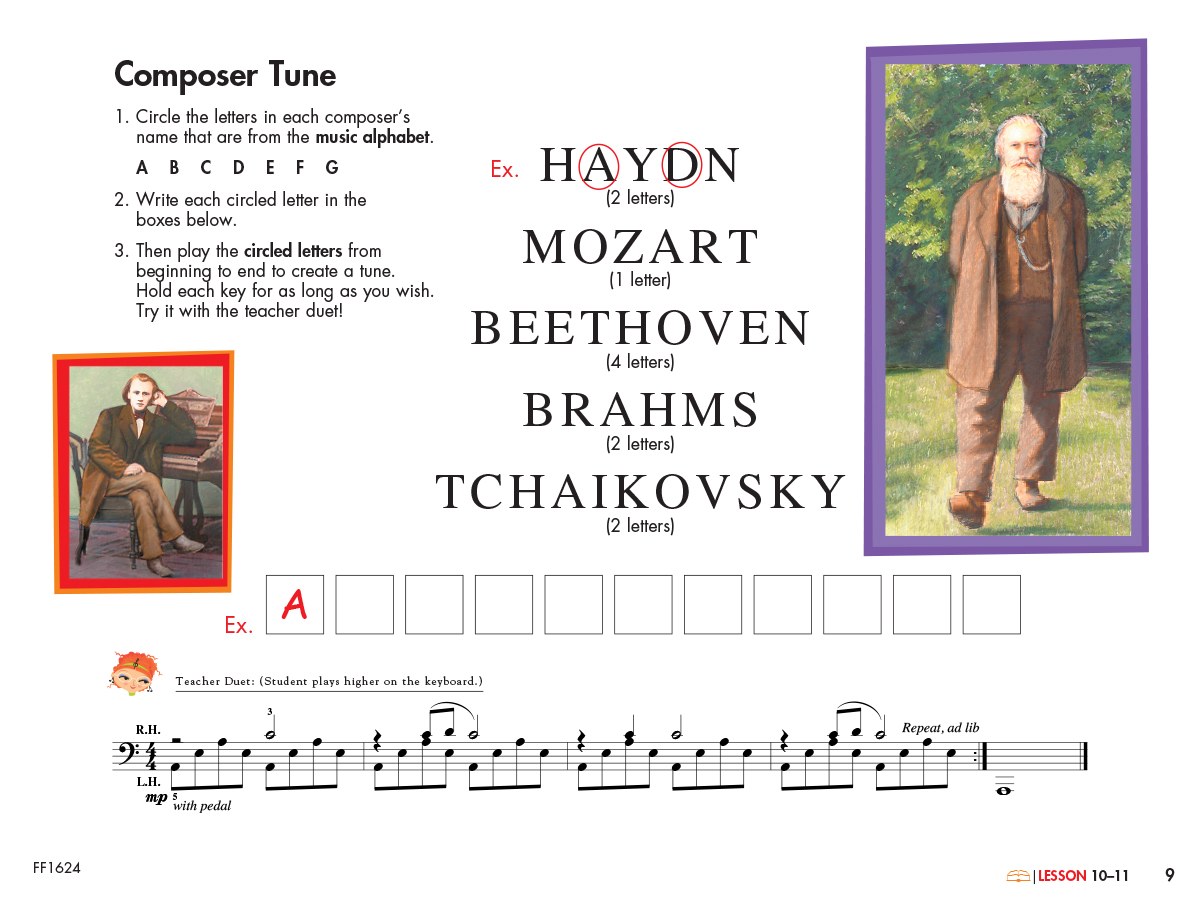
Complete the Music (pp. 20-21)

The Enchanted Piano (pp. 22-23)

Rockin’ with Skips! (p. 35)

6. Is there technique in the C Book?
Yes, technique is included in the Lesson Book C with Technique Games.
For the young beginner we can use playful technique activities that guide small hand development. It’s been said that a child will never “grow” a pianistic hand. Technique from early lessons sets the stage for future artistry.
Here are a few samples of Book C technique activities:
Skip with My R.H. Friends, Skip with My L.H. Friends (pp. 24-25)

Falling Elephant (p. 48)

All the Raindrops (p. 66)

7. Should a parent/caregiver attend the lessons?
For the “ C Books,” most teachers welcome the parent/caregiver at the lesson. A good solution at Book C is for the parent to attend a lesson occasionally. The student may be proud to “show and tell” what they have learned. The teacher may even work in opportunities for the parent to participate.
The teacher and parent can best determine how to proceed. Overall, having the parent attend some lessons brings:
- a renewed sense of the importance of lessons.
- a closeness between parent and child through the joy of music.
- a chance for the parent to learn music through the child’s eyes.
- an understanding of the assignment in case practice help is needed.
At Book C, the parent may still be a “practice guide” for the first day or several days of weekly practice. After that, see if the child would like to practice “solo” for the remainder of the week.
8. How long should a student in Book C practice each day?
Most Book C students may practice for about 20 minutes a day. Of course, more time will always generate faster progress. The goal is for practice time to be fun—improvement and confidence building each day!
A general rule of thumb is to assign the same number of pieces as the student’s age. If the student is six, assign 6 pieces. One or two pieces may be for review. One may be to play by memory!
The Little Yellow Practice Book is excellent for assignments. A keyboard allows students to color in each day of practice.
Gently guide what practice means. Practice involves completing the practice sheet of instructions from the teacher. Practice usually involves playing a song several times, maybe 3 to 5 times, with the goal that it sounds better and better and gets easier and easier! We might even tell students to ask themselves after they complete their practice, “Were my pieces easier today?” That’s a fun boost!

9. How many songs should a teacher assign each week?
In general teachers may consider assigning the same number of pieces as the student’s age. If the student is 7, assign 7 pieces. One or two pieces may be for review. One may be to transpose to the G 5-finger scale. One may be to play by memory!
If the student can do more and desires to do more, by all means expand the list.
Another beneficial assignment, in lieu of assigning more pieces, is to keep listening to the audio/CD.
Many musical advantages are taking place:
- hearing different instruments in the orchestrations.
- hearing actual children’s voices as a model for singing.
- “unconsciously” forming a library of aural patterns, melodic and rhythmic.
- processing the music notation faster as a result of the aural foundation.
The Little Yellow Practice Book (p. 17)
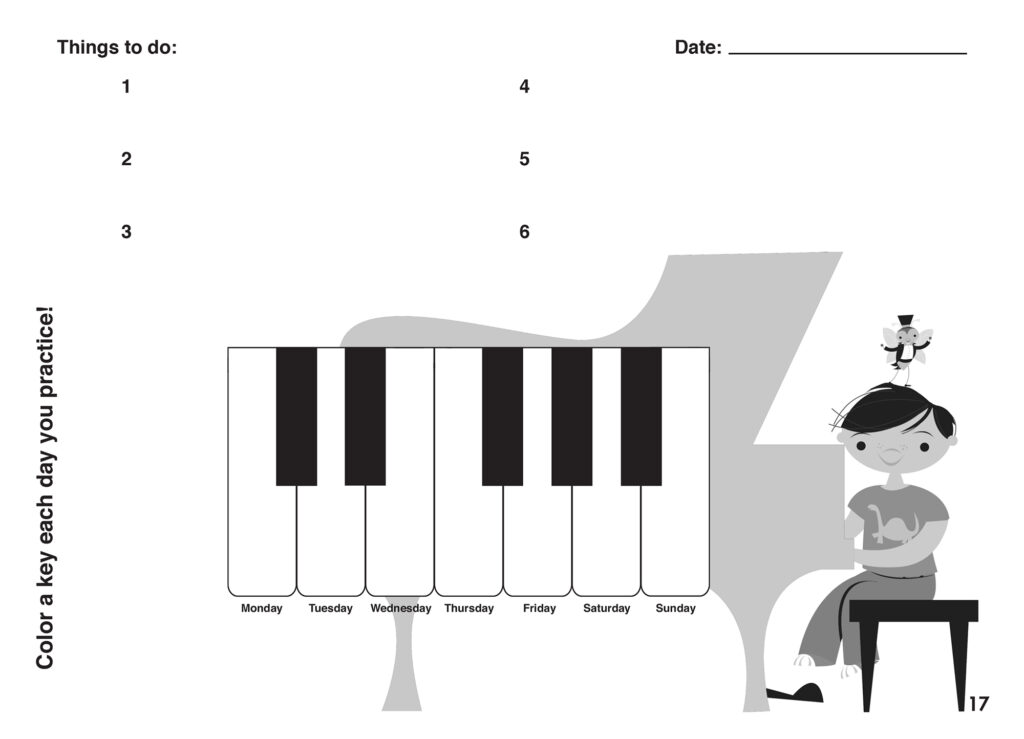
10. Is it possible to teach online lessons with a Book C student?
Yes, it is possible to teach Book C students in an online lesson, such as Zoom. It can, however, present some challenges due to the young age.
Three things will make online teaching easier:
- The teacher should subscribe to the Teacher Atlas so screen sharing is easy and quick!
- Ideally, the parent would participate in the online lessons to help direct the student, find pages quickly, etc. And ideally, the parent will help the child practice, at least for the first several days of the new practice week.
- The teacher may use a question-and-answer format of “discover the song together” through screen sharing before playing the piece.
Let’s apply this to “Con Brio” by Haydn.
These are sample ideas. Teachers can create original questions and responses.
Lesson Book C
Con Brio (pp. 8-9)

(Screen Share On)
- Here’s our first piece in the book, “Con Brio.”
Would you like to read the text at the top of the page or shall I read it?
(Student or teacher read the text.) - In order to answer the question, “Does it sound happy to you?” let’s listen to the orchestration. (Do)
“Was it happy or sad? I agree, very happy!” - Let’s look at the first page. The RH plays only one note. Can you name it?
“Good, Treble G.”
Which finger plays it?
“Yes, finger 3.”
Can you balance RH finger 3 on G?
“Very good.” - How about the LH? Can you name the first note? Remember the B Book Hint, “A is the top line, step down to ____?”
“Yes, G!”
Which finger plays it?
“Correct, finger 3! Both hands balance on a G.”
Is your LH comfortable on finger 3?
“Very good.” - I’m going to sing the first line. Then you play it after me. (Do).
“Nice job!” - Let’s look at p. 2.
Would you like to read the words in the box or have me read?” (Do) - That circled 1 means we jump our RH thumb to Middle C.
Would you play the first page again and jump your thumb to C for the start of p. 2?
“Fantastic.” - Before we play the whole song, do you see a quarter rest in the music?
Can you circle it in your own music?
“Good.” - I’m going to play the recording again. This time, when we get to the rest, let’s both shout out, “Rest!” Ready? I’m starting the recording. (Do)
“Great! - You’re ready to play the whole song. (Do)
“Nice job.” - Do you feel confident practicing the piece this week, or would you like to try it once again?
“Great, let’s try it once again.” (Do)
You are ready to adventure on with this piece this week.
11. Is there a Teacher Manual for Book C?
At this time there is no Teacher Manual for Book C. However, a teacher can use the concepts in this article, “spirit of play” for lesson planning.
The acronym s.p.i.r.i.t is used as a child-centered guide for teaching and learning.
12. What other materials support teaching the C Books?
Teachers and students may also enjoy these support items for lessons. (“PreTime Piano Books,” offering motivational arrangements in a variety of styles, are addressed in Question 13.)
Friends Posters

Flashcard Sheets Book

Flashcard Sheet 8

Flashcard Sheet 9

Flashcard Sheet 10
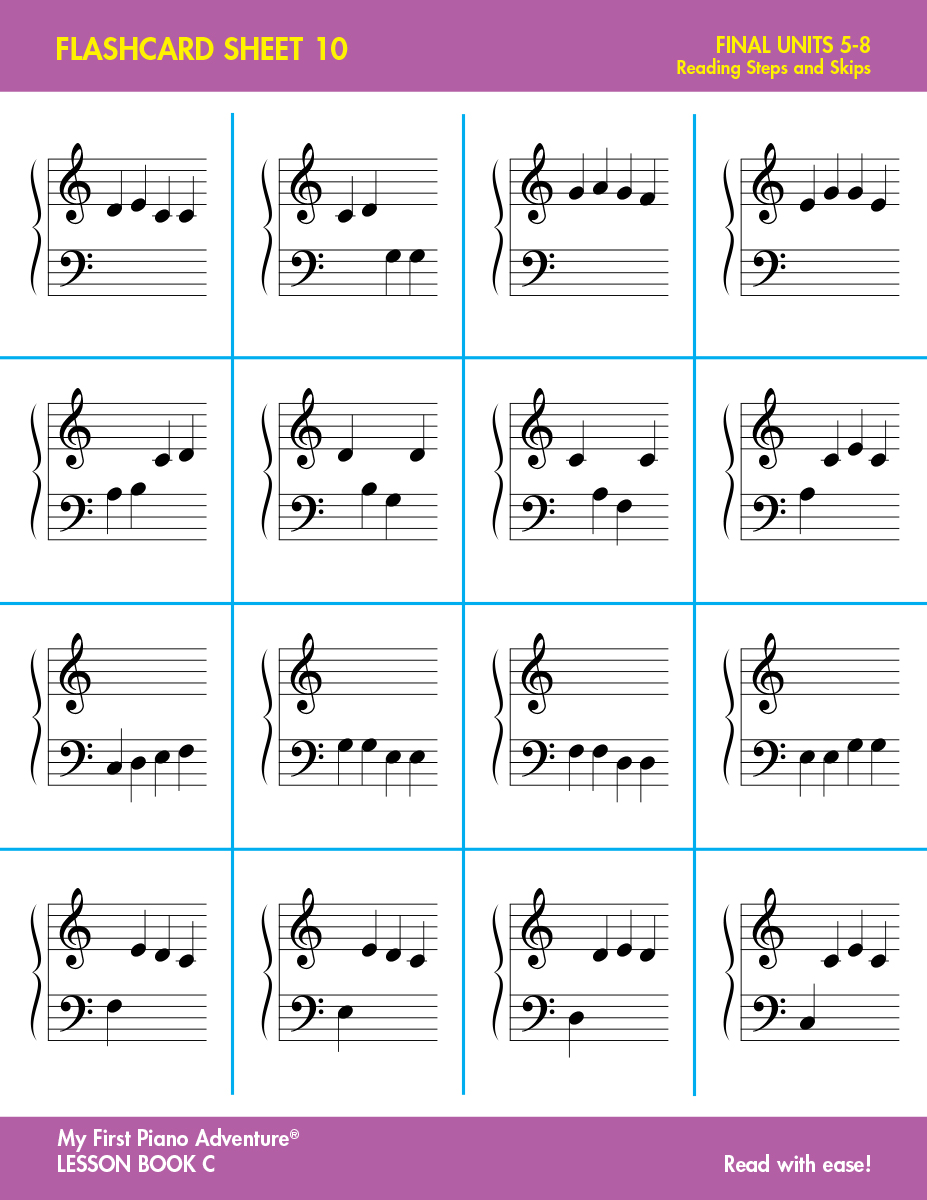
Flashcard Games and Activities

My First Piano Adventure Sticker Book


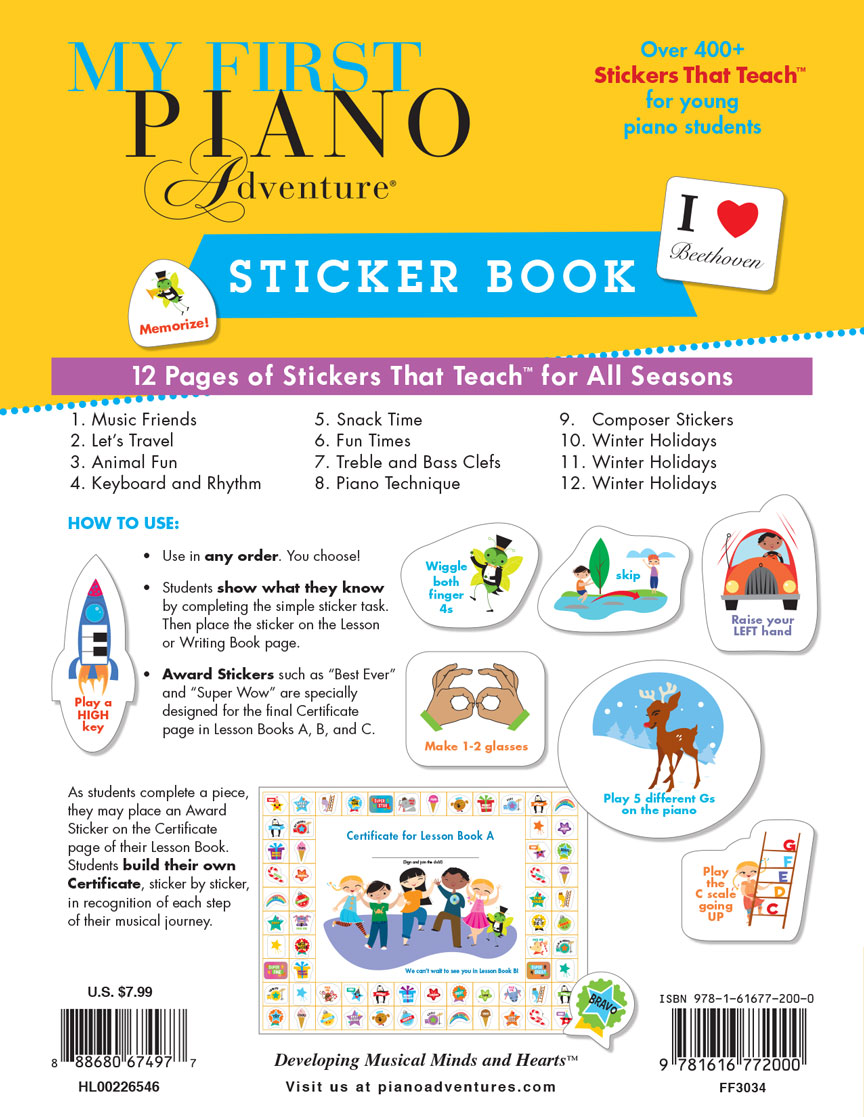
13. Could a Book C student begin a PreTime Piano Book?
Book C students could definitely explore the PreTime Books. The best PreTime Book to start with is the one that appeals most to the student.
Choices for starter books might be PreTime Disney, PreTime Classics, and PreTime Christmas.
For exciting blockbuster songs
PreTime Disney Book
I Just Can’t Wait to Be King (p. 4)
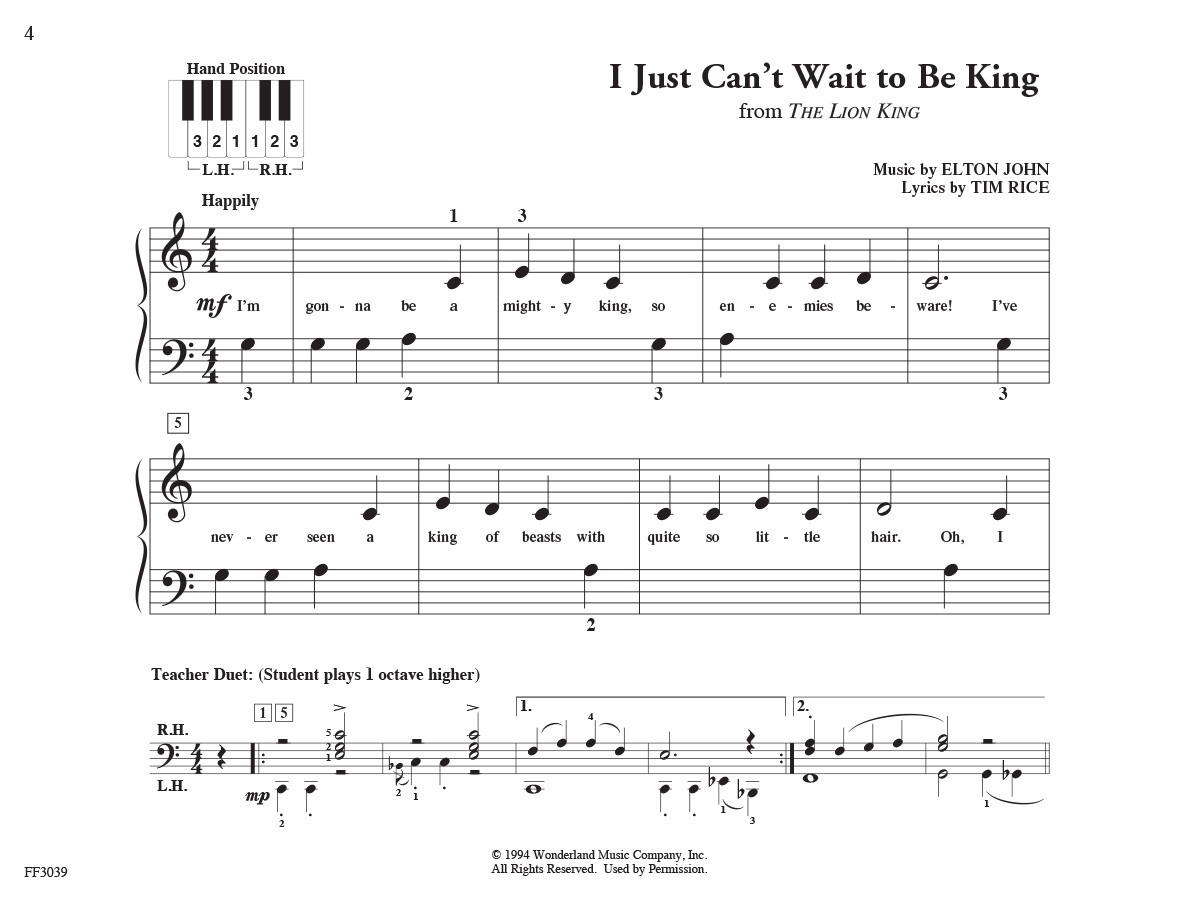
For great classic melodies that balance well with Book C
PreTime Classics Book
Beethoven’s “Ode to Joy” (p. 4)
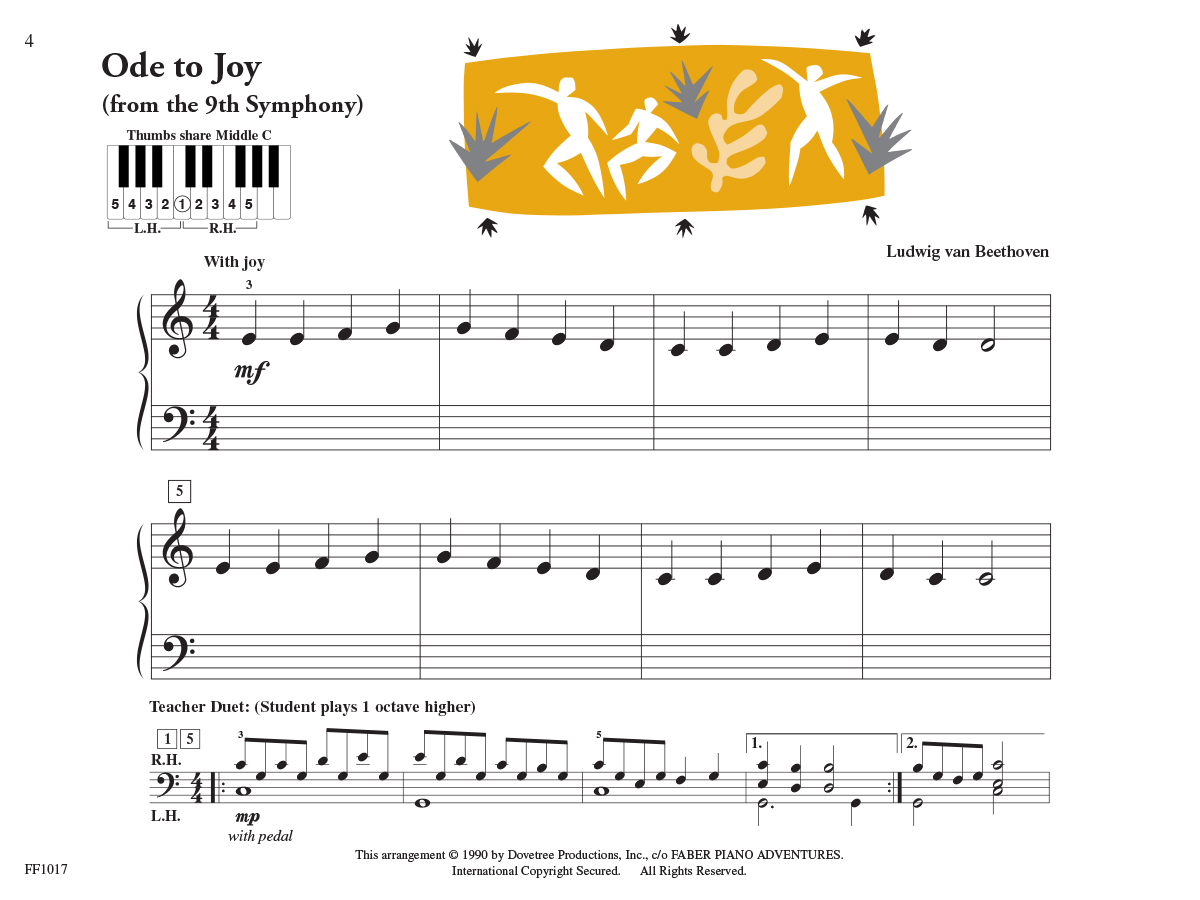
For seasonal holiday and sacred songs
PreTime Christmas Book
We Three Kings of Orient Are (p. 12)
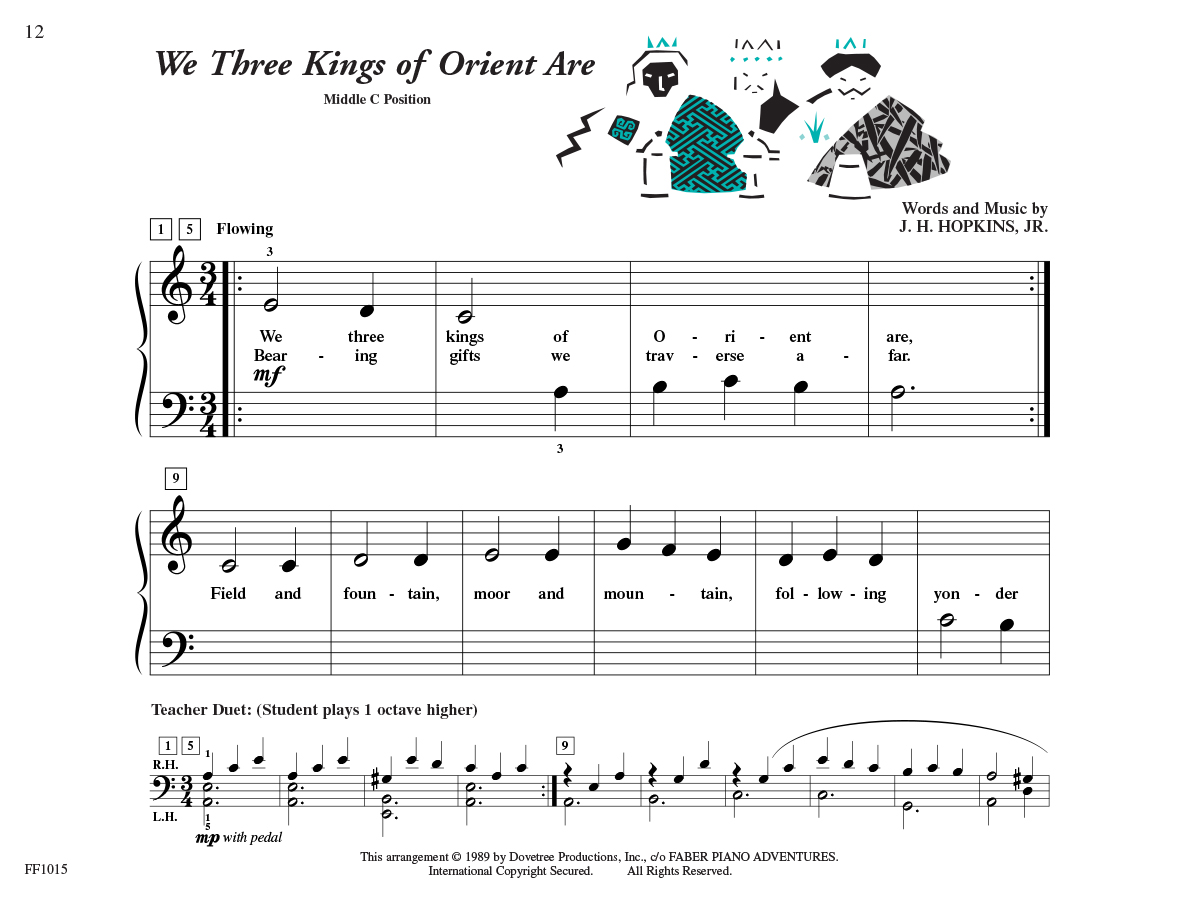
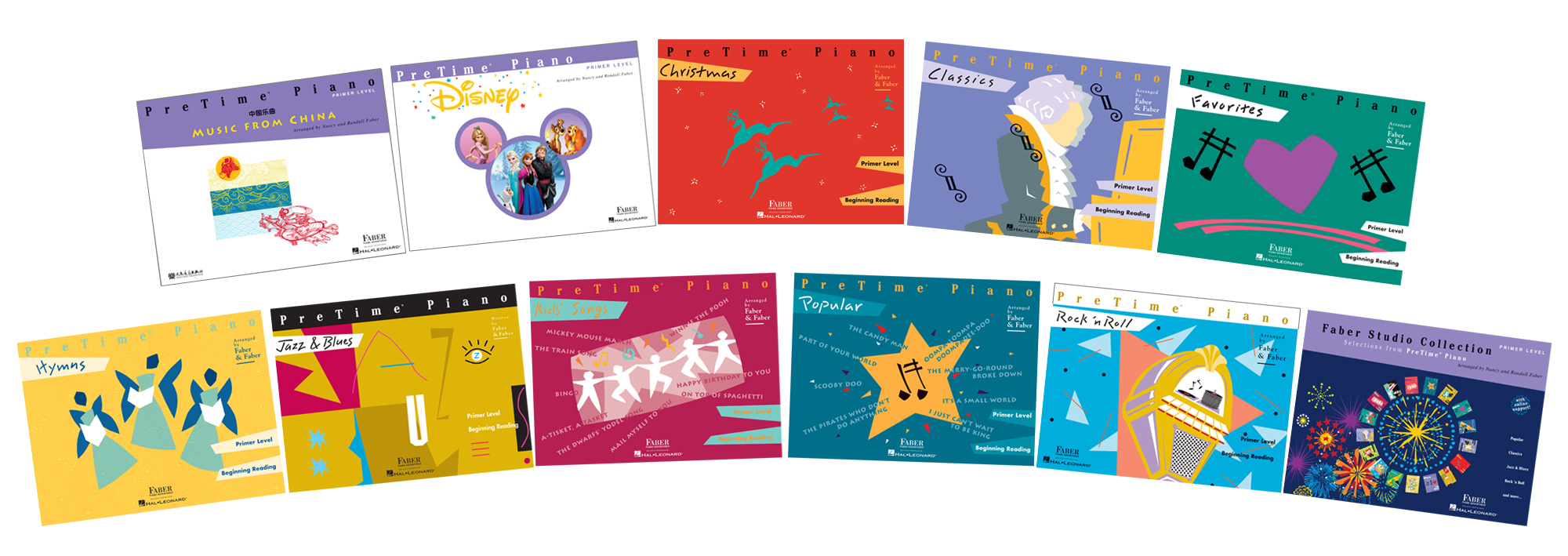
14. Is there a Christmas Book for the “C Level?”
Yes, My First Christmas Book C is available! There are 8 songs featuring colorful illustrations with the “friends.” A Christmas Music Calendar at the end of the book celebrates the season with music terms.
My First Piano Adventure Christmas Book C
Jolly Old St. Nicholas (pp. 6-7)

Jolly Old St. Nicholas (pp. 12-13)

Music Calendar (p. 20)

15. How long should it take a student to complete the “C Books”?
That is a good and open question. So much depends on the student, the teacher, and the length of the lesson. If a rough estimate were to be given, perhaps anywhere from 20-24 weeks. But this is just an estimate. Some students might finish sooner, some students may need the additional weeks for a more relaxed pace.
What is truly learned and enjoyed is the most important thing. Sometimes a little extra time in teacher-student communication, fun supplementary material such as the PreTime Piano Books, or the teacher’s own creative activity is just what is needed for a fun piano adventure!
16. Can the “C Books” be taught in a group setting? Is an assistant needed?
Group piano lessons for Book C students is a great option. Four students is rather ideal but a larger class is possible, especially if an assistant is onboard. Some teachers might consider a Level 3B or 4 student to be an assistant!
- The CD/Audio is a valuable resource. Sitting in the Music Circle together, students can listen, tap, and follow the teacher’s motions. Fun, focused, and “community-centered.”
- A Writing Table is useful for working with pencil activities. (Giving each child the same color of crayon saves time.)
- At the end of each class, consider “Born to Perform” time. Each child plays a piece while the other students sit cross-legged on the floor being good listeners. At the end, a bow with claps from classmates begins forming stage etiquette and performing ease.

17. What if a student is not learning to read the notes well?
If a student is not learning to read notes well, there are fun things to do:
- See Question 12, and implement the Flashcard Sheets as a warm-up at the beginning of lessons. Consider asking the parents to purchase a set and play the games at home. This will go a long way to improve note reading!
- For new and review pieces, play a game of “My Turn, Your Turn.” For this, the teacher chants the notes in measure 1, the student in measure 2, the teacher in measure 3, and so forth. Chant the last measure together!
- Play a game of “Discover This!” where the student finds and names the highest note in the piece, the lowest note, the note that repeats the most, etc.
All of these things, if done with regularity, will create a more confident, facile reader. And the teacher can create their own fun reading games!
18. Should a student memorize the assigned pieces?
Book C pieces are still short, 8 to 16 measures. Why not play one piece by memory each week, or every two weeks? Chat about the patterns. By starting early, as early as “Con Brio” (pp. 8-9), students integrate memorizing as a natural part of playing. With short songs, they are immediately successful. And success breeds success!
Consider keeping a list of 3-4 pieces a student can play by memory at any time. Then when someone asks them to play, they are prepared to shine.
19. Could a student in the “C Books” play in a recital?
Yes, a C Book student can most certainly play in a recital! Performing a song with the teacher duet can be ideal, offering support through a fun ensemble. Playing 2-3 favorite songs is also good so the sharing time is not too brief. Some students enjoy playing with the orchestration at a recital.
Small recitals are recommended— a total of perhaps 10-12 students. The young beginner can enjoy other performances without becoming restless while waiting.
Consider giving students a “listening assignment.” Students can choose their favorite piece performed that they would like to learn. In this way the recital is not just about the student’s own performance, but also about listening to the music of others. And looking forward to the path ahead!

20. Where does a student go after Book C? What if the student is not ready to begin Basic Piano Adventures Level 1?
Book C Lesson and Writing Books conclude the series for My First Piano Adventure. After this students may begin the four core books of Level 1 in the Basic Piano Adventures Method.
The four core Level 1 Books form a set for wholistic learning and correlate by page number. The Theory, Technique & Artistry, and Performance books give fresh perspectives and develop concepts in the Lesson Book. It is possible a teacher could substitute a different solo book than the Performance Book. However, the precise tie-in of concepts with the core books is hard to beat.
The core books address things easy to miss in lessons: ear-training, sightreading, improvisation, and importantly, technique from the very first lessons. Taking the time for deeper learning with the use of the four core Level 1 books prepares the student for success in Level 2A.
If a student is not quite ready to begin Level 1 in Basic Piano Adventures, enjoy more PreTime Books. The student may also enjoy a nice challenge with the Primer Gold Star Performance Book.



